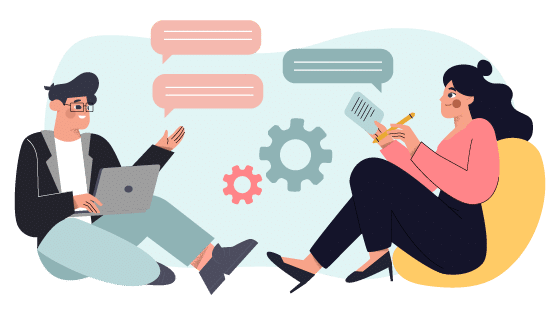For more information on this topic, check out our ebook here!
While there’s some dispute as to what constitutes a true millennial, most agree that it’s individuals born somewhere between 1981 and 1996. Sometimes touted as the leaders of tomorrow and often maligned as entitled employees, according to Inc.com , it is estimated that they’ll make up half of the workforce in 2020. By 2025, they’ll take over 75 percent of the workforce. No matter how you feel about them, millennials will become the leaders of the not-so-distant tomorrow.
The best way to prep them for that role is to implement training techniques that they respond to. With all the tech in the world at their fingertips, millennials crave more than the status quo. These fail-proof tactics can help give your millennial workforce the tools they need today, to be better leaders tomorrow.
Blended Learning
One-note training can feel stale, especially when millennials feel like they’re being forced into it. Blended learning gives millennials options beyond “watch this” and “click here.” Blended learning typically combines traditional methods, such as written and auditory training sessions, along with more modern approaches, incorporating things like smartphone apps, podcasts, and online videos. It leaves a wide berth for individual learning styles and levels of understanding and is especially effective for autonomous millennial learners because it allows them to learn in a way that suits them best.
Once the self-directed eLearning courses have helped the learner grasp a basic understanding, face-to-face instructor-led training then, in turn, provides the “mentorship style” training millennials crave to get real-time feedback.
Gamification
It’s often difficult to determine how well your learners are absorbing course material. If you’re not sure how employees will react in practice, or how much they’ve learned, games allow them to put their new knowledge and skills to the test in a safe, non-judgemental environment. It gives facilitators and mentors the benefit of real-time scores, which can then be converted into comprehensive feedback to ensure all employees are on the same page.
Remember that many millennials were raised to high standards and might feel nervous about acting and reacting. Gamification lets them test their skills without the high stakes of real consequences. Once they’ve perfected their practice, they’ll be better equipped to make real-time decisions confidently.
Apps
As some of the first digital natives (that is, individuals born into a tech-facing world), your millennial workforce already has their phones practically glued to their hands. Use that dependency to your advantage with custom training apps. Think about it: a smartphone is roughly the size of an index card, so it’s perfect for pushing out reminders, study material, and even quick quizzes to gauge your employees’ understanding.
Of course, in your enthusiasm to snag a younger, fresher workforce, make sure that you don’t discount your current employees. Ensure that new tech and apps are not intimidating to those who might be less tech-savvy or struggle with buying into a new approach to leadership. Apps shouldn’t be implemented because they’re the newest, shiniest thing; they should serve a real purpose and contribute to real results.
Your millennial workforce is more than ready to cut their teeth on leadership and growth opportunities. Among all the beliefs surrounding this age group, the most dangerous could be underestimating millennials as a force for innovation and change. Trust in the right training techniques, and you’ll be able to see great growth and potential in your millennial employees.






